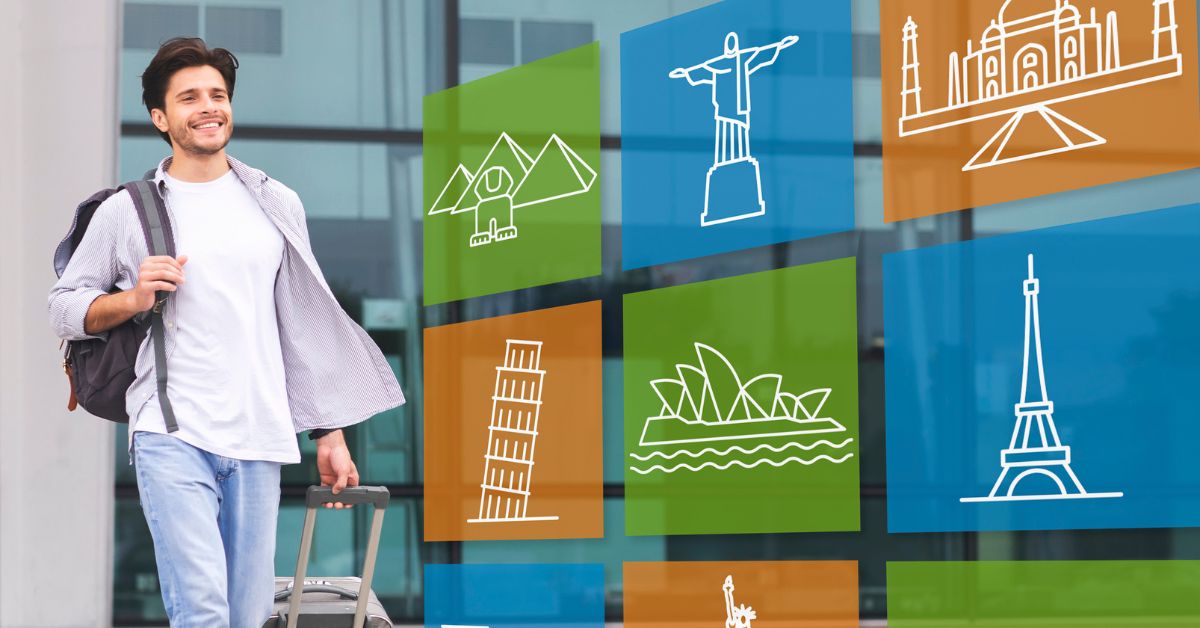
Business travel expenses are the second-largest controllable cost for any company. Therefore, it makes sense that every business establishes certain travel and expense (T&E) policy guidelines to manage these expenses.
A T&E policy simply sets the ground rules for travel expense management. The policy defines all stakeholders’ responsibilities, including employees, managers, accounts team & HR. The policy also contains rules regarding the company’s expense management system. See our policy example in this article below.
Its main purpose is to curb unnecessary business travel expenses by taking preventive measures.
Implementing a comprehensive travel policy is essential for managing T&E expenses and ensuring compliance with tax laws and company guidelines. But did you know that a well-designed T&E policy can also help you save money on expenses?
To estimate your potential savings on corporate travel expenses based on your company’s travel policy, try using our free calculator tools.
Download Customizable Sample T&E Policy Template
We have created a customizable template to help you create a comprehensive travel and expense policy. It contains all the essential policy elements, such as the objective, reporting and reimbursement process, reimbursable and non-reimbursable expenses, and policy exceptions.
You can use this template as it is or use it as a T&E policy example to create a new policy for your company. To download your free copy, click on the button below.
In this blog, we help you understand everything about T&E policies, including why you need one and how to create an effective policy. You can also download a free customizable business travel expense policy template for your company as a policy example.
What is a Corporate T&E Policy?
A corporate travel and expense policy is a set of guidelines and rules established by a company to manage and control the expenses associated with business travel. This policy serves as a framework to ensure that employees adhere to consistent and reasonable practices when incurring travel-related expenses on behalf of the company.
The policy includes reimbursable and non-reimbursable travel expense categories, spending limits according to different employee levels, guidelines about t&e expense filing, and official repayment methods.
Predicting and controlling employee spending can be challenging without any T&E policy. Without an official policy document, employees cannot know where to spend and how much. Additionally, they may need to learn the standard procedure to file expenses.
Hence, it is crucial to have a proper travel expense policy in place. This will curb unnecessary travel spending and ensure faster filing and reimbursement.
Key Objectives of a T&E Policy
1. Establish a Procedure for Reimbursing Both Employees and Non-employees
The travel and expense policy needs to detail the reporting process for expenses, specifying the required inclusions. Furthermore, it should outline the company’s approach to reimbursing employees for expenses incurred during business travel.
2. Ensure compliance with IRS tax rules
The IRS rules regarding reimbursable and non-reimbursable expense categories are stringent. Any violation can lead to heavy fines. Hence, the policy should include IRS guidelines about business travel expenses. This way, you can make the employees understand the legal requirements of government tax and audit authorities.
Benefits of Having a T&E Policy
An automated travel and expense policy helps in the following ways:
1. Streamlines workflows & sets employee expectations
A clear and concise T and E policy helps employees understand how much and where they can spend and how the company will process their expenses.
It will also limit different purchases. Thus, the number of repetitive questions that your finance or HR managers need to answer will decrease drastically.
2. Helps in fraud prevention
A well-defined T&E policy helps prevent expense fraud through clear guidelines about expenses. With proper clarity, the finance team knows which costs to reimburse and which ones to reject, helping them validate expenses quickly.
Moreover, with a proper policy, employees know which expenses are reimbursable. This prevents common unintentional events like out-of-policy spending.
3. Define roles and responsibilities for different teams
A part of setting travel and expense policy is identifying the key stakeholders and defining their roles and responsibilities in the t&e expense management process. Here are a few core stakeholder categories and their roles:
- Finance, accounts, and audit teams: audit all expense reports before giving the final stamp of approval for reimbursement.
- Human Resources: reimburse employees on time.
- Managers and approvers: validate expense claims and send them to the finance teams for final approval.
- Employees: spend according to the policy, create and submit timely expense reports.
4. Helps in staying audit-ready
A major incentive to set a travel and expense policy is to align with the tax and compliance guidelines laid down by governing authorities. You can check the guidelines laid down by the IRS to stay compliant and audit-ready.
5. Enhances employee morale
As the employees know the budget, they book hotels and transportation accordingly. This speeds up reimbursements and boosts employee morale.
Essential Segments of a Comprehensive T&E Policy
HR and finance managers must collaborate to create an effective travel and expense policy. It is also essential to continually communicate the policy to all employees and update them on any changes.
Although there is no one-size-fits-all approach to policy creation, here are the three fundamental sections that should be a part of your policy.
The Objective Of The Policy
The first section of your policy should lay down the objectives of the policy and its benefits for employees. It should clarify who the policy is for and the goals you want to achieve by revising or formulating it.
Expense Reporting & Reimbursement Process
The second section should explain the entire expense reporting and reimbursement process, i.e., the workflow for pre-authorization, expense report creation, submission, finance approval, and reimbursement.
Your T&E policy needs to tell all the employees clearly:
1. The allowable tool for claiming the expenses
If you have outsourced your company’s travel management, provide a link to your company’s expense management platform. You can also share the contact number and email address of the travel management solution provider’s points of contact.
2. Guidelines about pre-authorization
Employees must know if they require pre-authorization before making any business expense, travel-related or otherwise. If employees need permission to spend, include the approval workflow in the policy document.
3. Mode of payment
Do you provide company credit cards for business transactions, or would you reimburse on a per diem basis? The employees should know about the official mode of payment for business transactions.
4. Guidelines about mandatory proof for claims
You must tell all the employees the documentation they must present for reimbursement. This can be as per internal guidelines or a government mandate.
5. Give a time frame to report an expense
Employees must be aware of the monthly deadline for filing expenses. Otherwise, it will cause the financial team a lot of inconvenience, with the employees chasing them for reimbursement at any time.
6. Approval process
How approvals will take place should be mentioned. The expense claims can be accepted or rejected based on the defined budget. Also, there should be a proper workflow for approving authorities to approve or reject an expense report.
7. Audit by the finance team
Expense audits are necessary to identify errors and frauds. Hence, you must lay down an expense audit framework in the policy. The framework should indicate the finance team’s procedure to ensure all approved reports are acceptable.
8. Timeline for Expense Reimbursement and Methods for Employee Tracking
You should mention the timelines for when the employees will get their claims. For instance, it can be 15 days after filing an expense report and receiving approval.
Reimbursable & Non-reimbursable Expenses
The third section of your T&E policy should include all the expense categories that will be considered for reimbursement. Some common considerations can be:
1. Travel
The employees should be aware of the different methods of transportation available to them, such as plane, train, rental car, etc.
Is business class allowed for all employees? Will they be reimbursed for extra luggage? In case they are using their personal vehicles, how will they report their mileage, and what’s the limit? Will you also reimburse the parking fee?
2. Accommodation
What is the standard acceptable rate for a hotel room? Can they get Airbnb or studio apartment options? You can also mention accommodation rates according to geography and employee level.
3. Food
Will you reimburse employees on a per diem or meal basis? Or will they get a company credit card? What is the limit? Is room service also included in it? Will you reimburse for dinners with clients?
4. Medical/Health or Travel Insurance
Is your company providing employees with medical insurance, especially when traveling abroad? Also, are you giving travel insurance? Who can the employees reach out to know about it?
5. Mobile charges
Will the company reimburse employees for international calling charges? What is the maximum amount if the company returns international calls and texts?
6. Miscellaneous
What if an employee is charged with a parking fine? Will the company pay for the damage if an employee’s mobile phone is broken or lost? You must include guidelines regarding the reimbursement of such miscellaneous expenses.
Get a Sample T&E Policy Template that You Can Customize and Download
We have created a customizable template to help you create a comprehensive travel and expense policy. It contains all the essential policy elements like objective, reporting and reimbursement process, reimbursable and non-reimbursable expenses, and policy exceptions.
You can use this template as it is or use it as a T&E policy example to create a new policy for your company. To download your free copy, click on the button below.
The Implementation Success of T&E Policies Relies on Automation
Creating a T&E policy for your company is only half the work done. For your policy to be effective, powerful implementation is the key. Hence, you should automate travel and expense management with a software solution like itilite for better implementation.
itilite is a new-age SaaS-based corporate travel management platform that offers granular expense policy configurations. With such configurations, you can define spending limits for every travel expense category according to various employee levels. Once you set the limits, the software will ensure no out-of-policy expenses get filed. Moreover, the system will auto-audit duplicate expenses and weekend spending.
If you want to experience seamless policy implementation through the advanced features of itilite, get a free demo now.












